Exploring Dubai's Unique Mangrove Beaches and Their Value
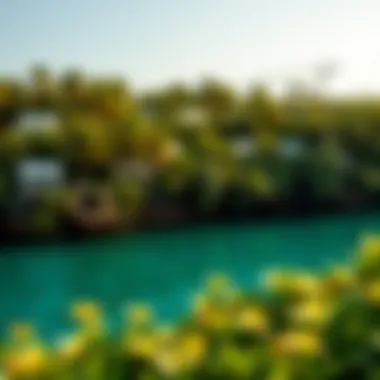
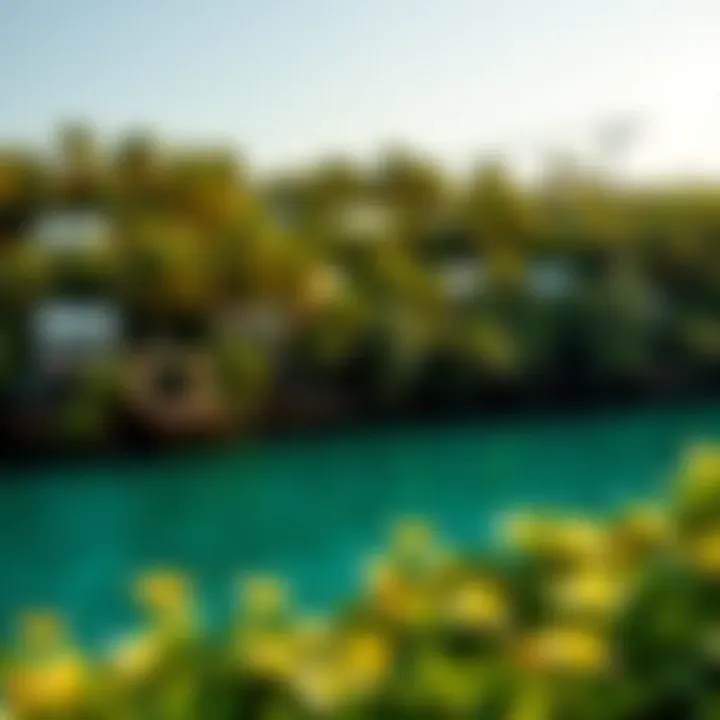
Intro
Mangrove beaches play a pivotal role in network of ecosystems that form a unique interplay between land and sea. In the vibrant landscape of Dubai, these habitats offer more than just scenic views; they represent a vital nexus for ecological sustenance, economic opportunities, and recreational pursuits. Amid the rapid pace of development in Dubai, understanding the significance of mangrove environments becomes increasingly critical, especially as the demand for sustainable practices rises.
The rich biodiversity within the mangroves serves not only as a nursery for marine life but also as a protective barrier against coastal erosion. Additionally, these ecosystems contribute to local economies through tourism and water sports. This article aims to delve into the various aspects of mangrove beaches in Dubai, exploring their ecological importance, economic impacts, and the real estate trends that are increasingly intertwining with these natural wonders.
As we journey through the intricacies of mangrove beaches, you will find a detailed look at current market trends, investment opportunities, and the essential characteristics that make these environments critical components of Dubai’s coastal charm.
Geographical Context of Mangrove Beaches in Dubai
The geographical context of mangrove beaches in Dubai is essential, as it provides insight into their importance within the coastal ecosystem and highlights the interplay of natural features. These unique environments serve as critical habitats and are indispensable in various ecological and economic functions. Understanding the layout of coastal areas helps to appreciate how these delicate ecosystems integrate into the broader landscape.
Overview of Dubai's Coastal Geography
Dubai is characterized by its striking coastal line, stretching along the Arabian Gulf. The mixture of sandy beaches, rocky shorelines, and sprawling urban developments creates a complex terrain. The hot desert climate meets the refreshing waters of the Gulf, which results in a range of ecosystems that support varied wildlife. One notable feature is the juxtaposition of urbanization and natural landscapes, as skyscrapers reach towards the sky nearby tranquil waters.
Mangrove beaches are not just a backdrop to Dubai's industrial advancements; they add to the ecological fabric of the area. The intertidal zones, where land meets water, provide crucial environments for plants and animals. Mangroves create a buffer against erosion, protecting coastlines from storms while nurturing a vibrant array of life both in and out of the water. This region is susceptible to changes due in part to expanding infrastructure and tourism. Hence, the geographical setup illustrates both the delicate balance of nature and the pressures of development.
Distribution of Mangrove Ecosystems
Dubai's mangrove ecosystems are concentrated mainly in the eastern and southern parts of the coast. The most notable sites are located in areas like the Dubai Creek and the Jebel Ali Wildlife Sanctuary. These regions host thick clusters of Avicennia marina, or grey mangroves, which flourish in stark contrast to the high-rises and economic hubs of the city.
The distribution of mangroves is not uniform; they emerge in patches where conditions are favorable. Factors influencing their placement include salinity levels, tidal ranges, and the composition of the sediment. The unique conditions of Dubai's coastal waters allow these trees to thrive, serving as vital sanctuaries for marine and bird life. As urban sprawl puts pressure on these ecosystems, understanding their distribution becomes increasingly crucial in conservation efforts.
"Protecting mangroves isn't just about saving trees; it's about preserving an entire ecosystem that supports marine life and shields our coastlines."
Overall, the geographical context of mangrove beaches in Dubai offers a broader comprehension of their role within both the ecosystem and socio-economic landscape. By highlighting the importance of these ecosystems, we can forge plans that protect and enhance their status, ensuring that both nature and urban development can coexist.
Ecological Significance of Mangrove Beaches
When it comes to understanding nature’s intricate web, the ecological significance of mangrove beaches cannot be overstated. These unique ecosystems are more than just scenic vistas; they play a pivotal role in maintaining biodiversity, sequestering carbon, and supporting a plethora of marine life. For stakeholders such as investors and environmental analysts, grasping these aspects is crucial, given the rise of eco-sustainability in contemporary economic decision-making.
Biodiversity and Habitat Formation
Mangrove beaches serve as a cradle for an astonishing array of biodiversity. The intertwining roots of mangrove trees create a complex habitat that supports both terrestrial and aquatic species. The muddy waters found among these roots provide excellent nursery grounds for juvenile fish and crustaceans. It’s not just fish that benefit; various birds—such as kingfishers and herons—flock to these areas, finding nesting sites and abundant food sources.
"The mangroves are like nature's buffet, with a menu that offers something for every critter out there."
Additionally, their foliage shapes the ecosystem by providing shade and stabilizing shorelines, which is particularly important in combatting erosion. The mudflats and associated mangrove areas maintain a delicate balance, making them indispensable for species diversity. In essence, the intricate web of life woven into the mangroves is a critical component in the ecological framework of Dubai.
Role in Carbon Sequestration
One of the key roles mangrove ecosystems play is in carbon sequestration. These remarkable trees can capture carbon dioxide from the atmosphere at a far greater rate than any terrestrial forest. The submerged soils beneath mangrove forests store large amounts of blue carbon, one of the very few ecosystems capable of providing a long-term carbon sink.
This ability is not just an environmental perk; it offers economic potential too. As global markets increasingly value carbon credits, investing in mangrove conservation could yield significant benefits. Think of it as a means of turning a profit while simultaneously contributing to the planet's health. For Dubai, this could mean reinforcing its commitment to sustainable development while capitalizing on a burgeoning market.
Impact on Marine Life
The impact of mangrove beaches on marine life is profound and multifaceted. First off, they serve as crucial nurseries for a variety of fish species, including commercially important ones such as shrimp and snapper. The complex root systems offer sanctuary and food, increasing the chances of survival for young fish. As these juveniles grow, they disperse into deeper waters, thus sustaining local fisheries that many communities rely on.
Moreover, the organic matter produced by decaying leaves and fallen branches contributes to the nutrient cycle in adjacent marine environments. This nutrient influx bolsters fish stocks and enhances the health of coral reefs nearby, creating a symbiotic relationship between habitats.
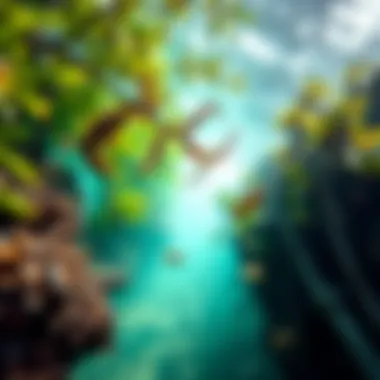
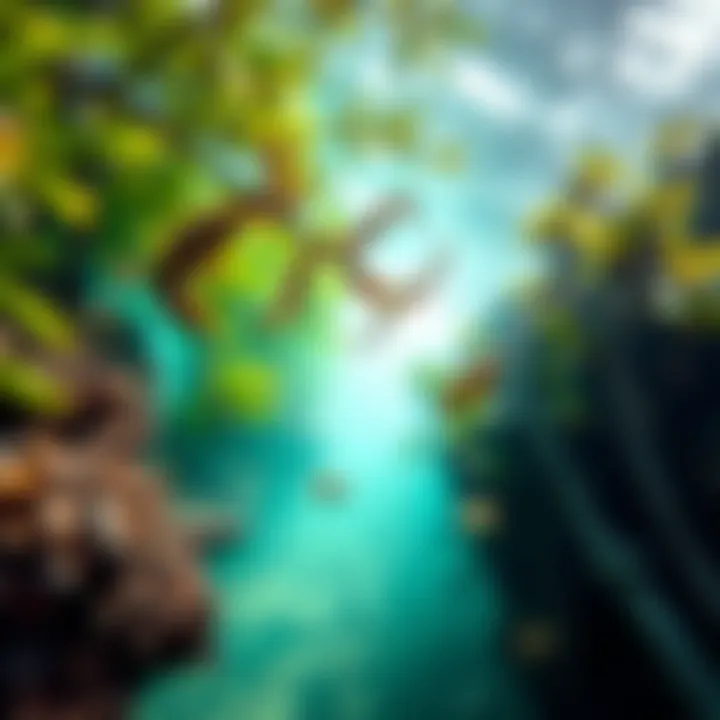
In a nutshell, the ecological significance of mangrove beaches in Dubai stretches far and wide. They are not merely a natural spectacle but an interconnected web that contributes significantly to biodiversity, climate resilience, and marine sustenance. Understanding these elements is essential for investors, agents, and other stakeholders who aim to balance economic activities with environmental stewardship. Such awareness not only enhances the appreciation of these ecosystems but also informs sustainable practices and investments in the future.
Economic Influence of Mangrove Beaches
The economic influence of mangrove beaches in Dubai extends beyond mere aesthetics and natural beauty. These ecosystems not only act as protective barriers for the shorelines but also serve as economic powerhouses. When examining the potential benefits, it’s vital to consider how mangrove beaches contribute to tourism, real estate, and community well-being.
Tourism Potential
Water sports and recreational activities
Water sports and recreational activities flourish in mangrove areas, positioning them as prime tourism destinations. Here, visitors can enjoy activities like kayaking, paddleboarding, or simply exploring the intricate waterways that meander through the mangroves. One of the key characteristics of these watersports is their ability to engage environmentally conscious travelers.
The unique feature of these activities lies in their harmony with nature. Instead of overwhelming natural landscapes, they allow enthusiasts to connect with the surrounding ecosystem in a responsible way. The demand for such recreational options is on the rise, mainly among eco-tourists seeking unique experiences. However, there are drawbacks to consider. Excessive water traffic can lead to disturbances in fragile habitats if not managed properly, highlighting the need for regulations that ensure sustainable enjoyment of these activities.
Ecotourism initiatives
Ecotourism initiatives stand out as another powerful aspect of the tourism potential associated with mangrove beaches. These initiatives promote responsible travel to natural areas, encouraging minimal environmental impact while maximizing cultural appreciation. The key characteristic of ecotourism in this context is the focus on education and conservation. Tourists actively learn about mangrove ecosystems and their critical roles in biodiversity and coastal protection.
A specific advantage of ecotourism is the fostering of community involvement. Local communities often benefit directly from ecotourism projects, which can create jobs and stimulate local economies. Nevertheless, such initiatives may face challenges, notably in balancing tourism growth with conservation. If not carefully monitored, popular ecotourism spots could suffer from overcrowding, leading to potential harm to the very ecosystems that attract visitors in the first place.
Real Estate Development Opportunities
Sustainable property projects
The rise in sustainable property projects along mangrove beaches represents a forward-thinking fusion of ecology and investment. These projects emphasize environmentally-friendly building practices while taking advantage of prime coastal locations. The compelling factor behind these initiatives is not just profitability; it's also about being responsible stewards of nature.
What makes sustainable property projects appealing is their alignment with a global trend towards greener living. Investors are increasingly prioritizing developments that incorporate renewable energy, low-impact designs, and biodiversity preservation. This unique aspect can yield long-term benefits, as properties in eco-friendly developments are often more attractive to buyers. However, developers must navigate complex regulations that govern coastal construction, balancing economic incentives with conservation mandates.
Investment in coastal conservation
Lastly, investment in coastal conservation is becoming an essential component for both ecological integrity and economic viability. These investments focus on the restoration and protection of mangrove areas, recognizing their role in shielding coastal properties from erosion and extreme weather events. One key characteristic is the financial return on sustainability; areas that emphasize conservation often see increased property values over time.
The unique feature of such investments is their dual impact; they not only enhance environmental resilience but also attract eco-conscious buyers. However, the challenge lies in securing sufficient funding and community buy-in. Conservation projects can sometimes be met with skepticism from those primarily motivated by short-term gains, necessitating creative solutions to engage all stakeholders.
Supporting sustainable practices serves both the environment and the economy, ensuring that mangrove beaches continue to thrive in Dubai’s rapidly changing landscape.
Recreational Aspects of Mangrove Beaches
The recreational aspects of mangrove beaches in Dubai draw countless visitors seeking nature, adventure, and tranquility. These unique ecosystems not only serve ecological functions but also offer a range of activities that enhance the local economy and foster community engagement. Exploring the recreational opportunities here leads to a deeper appreciation of the mangroves' diverse benefits, as well as the enjoyment they provide to residents and tourists alike.
Activities at Mangrove Beaches
Canoeing and kayaking
Canoeing and kayaking stand out as popular activities on Dubai's mangrove beaches. They allow participants to navigate through intricate waterways, fostering a connection with the coastal landscape. Gliding silently over the gentle waters, paddlers can observe the flora and fauna up close, experiencing the ecosystem in a way that is both immersive and intimate.
Key characteristics of these water activities include their accessibility in terms of skill levels. Whether you are a novice or a seasoned pro, there are opportunities for everyone. Kayaking is not simply a recreational outlet; it encourages physical fitness and mental relaxation. One unique feature is that these activities can often be done at your own pace, allowing individuals to linger in serene spots, taking in the sights.
However, it’s worth noting some drawbacks, such as the need for proper safety gear and awareness of weather conditions. While generally safe, paddlers should remain vigilant about potential changes in the tide or weather, as they can quickly alter the experience at sea.
Birdwatching and wildlife tours
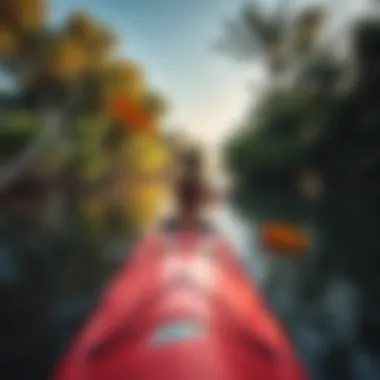
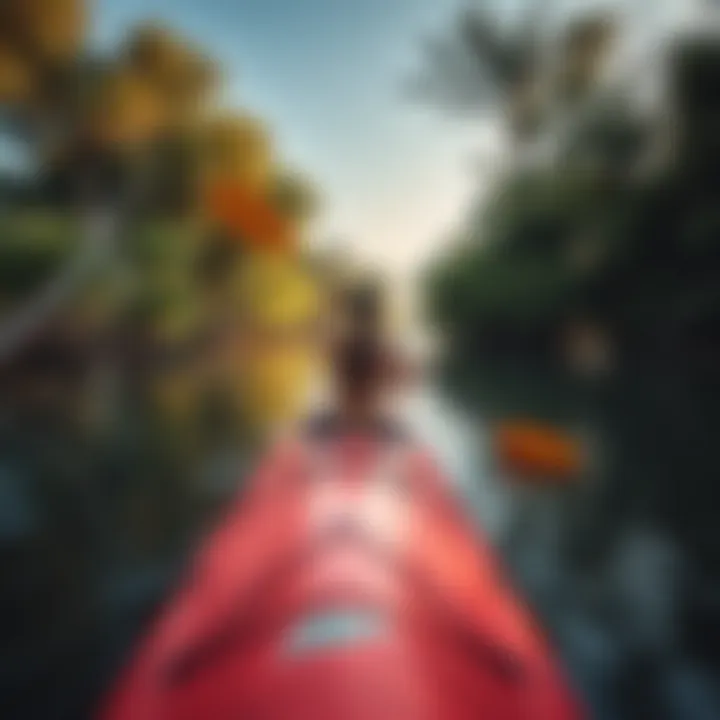
Birdwatching and wildlife tours present an enriching facet of recreational options at mangrove beaches. This activity highlights the rich biodiversity that thrives within these habitats. Visitors often flock to catch a glimpse of various bird species including herons, flamingos, and egrets that call these waters home.
The charm of birdwatching lies in its peaceful nature. It encourages patience and appreciation for the nuances of wildlife, while providing educational value to participants. By engaging in guided tours, guests learn about the delicate ecosystem and the importance of protecting it. This knowledge fosters a greater sense of responsibility towards conservation efforts, making it a particularly beneficial choice in the context of this article.
One unique feature of this activity is the ability to observe wildlife in their natural habitat without causing disruption. The downside? A keen eye and a good bit of luck is often required to spot more elusive creatures, which may not always be guaranteed.
Facilities for Visitors
Observation platforms
Observation platforms are an essential feature for visitors at mangrove beaches, providing vantage points to appreciate the stunning scenery and observe wildlife without intruding upon their habitat. These structures are designed to blend with the environment, offering unobstructed views of the mangroves and the surrounding waters.
The significance of these platforms cannot be understated. They serve as educational tools, equipped with information panels that explain the ecosystem's importance. This invites visitors to learn more about the biodiversity and conservation efforts in place. A notable benefit is that they encourage longer visits, as people find themselves captivated by the view.
However, one challenge is ensuring that the platforms are regularly maintained to prevent wear and tear, which could hinder the visitor experience over time.
Guided tours and educational programs
Guided tours and educational programs play a crucial role in enhancing the visitor experience at mangrove beaches. These tours provide insights into the unique ecosystems and the various species that inhabit them. Participants are led by knowledgeable guides who share fascinating facts and stories, turning a simple visit into an educational journey.
This aspect of recreational activity stands out due to its blend of fun and learning. Engaging with a guide can spark curiosity and encourage participants to see not just the beauty, but also the critical importance of mangroves in combatting climate change and preserving biodiversity. It fosters community involvement as more locals learn about the significance of conservation.
Yet, guided programs rely on availability and proper booking, which may limit spontaneity in visiting.
In summary, the recreational aspects of mangrove beaches in Dubai offer a rich tapestry of activities that connect individuals to nature while highlighting the significance of these ecosystems. This connection, in turn, plays a pivotal role in promoting sustainability and environmental stewardship in the region.
Challenges Facing Mangrove Ecosystems
Mangrove ecosystems, though vital to coastal health, face numerous challenges that threaten their integrity. These challenges not only impact the mangroves themselves but also the myriad species that depend on these unique environments as well as the communities that rely on them economically and recreationally. Recognizing and addressing these challenges is crucial for the sustainability of Dubai's mangrove beaches and the overall coastal ecology.
Environmental Threats
Pollution and waste management
Pollution emerges as a significant threat to mangrove ecosystems, primarily due to the influx of industrial waste and urban runoff. This pollution contaminates the waters surrounding the mangroves, affecting both local flora and fauna. Amidst the rapid development in Dubai, poor waste management practices have led to increased levels of pollutants, which can disrupt not only water quality but also harm marine life.
A notable characteristic of pollution in this context is the presence of plastic debris, which can entangle marine species and introduce harmful chemicals into the food chain. This makes addressing pollution a pressing concern for the health of mangroves. The unique feature here is the interdependence of cleaner waterways and a healthier mangrove habitat, illustrating that effective waste management strategies can significantly enhance environmental outcomes.
When considering the advantages of managing pollution effectively, it’s clear that cleaner habitats support a more robust biodiversity, further enriching the ecological web that sustains the area's species, including vital fish populations. However, the downside includes the resource intensity of implementing these clean-up measures, which can be daunting for local authorities.
Coastal erosion
Coastal erosion represents another formidable threat to mangrove beaches. It occurs when sea levels rise or wave action increases, resulting in the gradual loss of land. In Dubai, the way coastal erosion unfolds highlights how it directly threatens the very existence of mangrove habitats situated near the shoreline. This phenomenon not only reduces the area available for mangrove growth but also impacts wildlife that seeks refuge in these ecosystems.
The critical point of concern here is the loss of natural barriers that mangroves provide against storm surges and coastal flooding. Their roots are known to stabilize shorelines; hence, as erosion accelerates, these protective benefits diminish, leaving communities at risk. The unhelpful aspect is that while erosion is a natural process, human activities exacerbate it, commonly leading to an unsettling cycle of habitat loss and reduced shoreline protection, further aggravating the problems at hand.
Development Pressures
Overdevelopment in coastal areas
In recent years, Dubai has seen an unprecedented surge in coastal development. With new luxury resorts and high-end properties continually sprouting up along the coast, the pressure on mangrove ecosystems has intensified. This boom in real estate creates a competing interest that often overshadows the need for environmental protection.
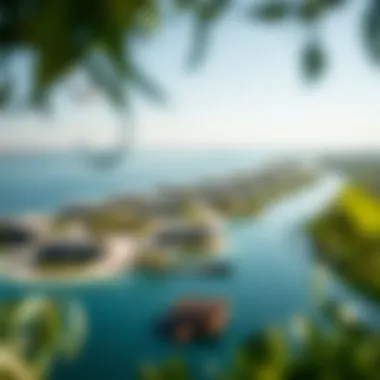
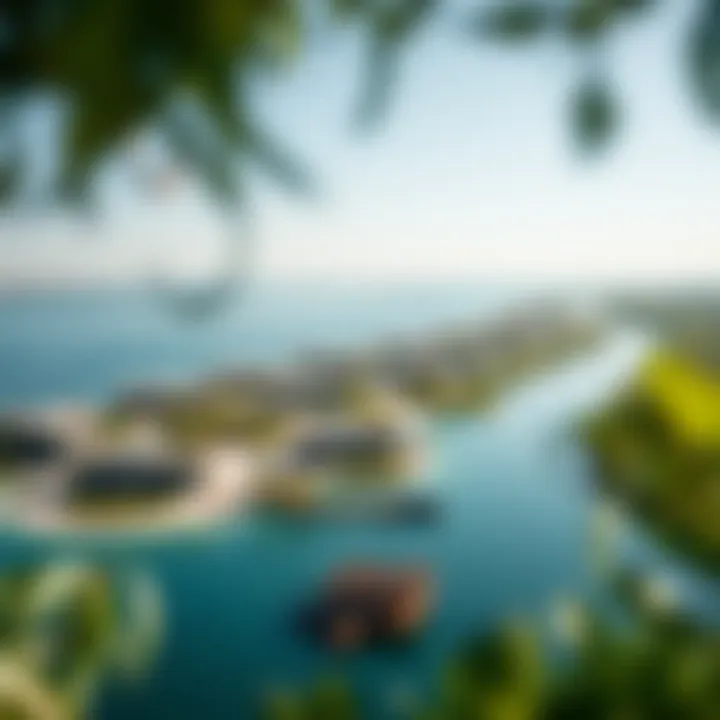
One primary challenge autochthonous to overdevelopment is how it encroaches upon vital mangrove habitats, forcing out native species and disrupting breeding grounds. The lure of sky-high investments often overlooks the intrinsic value these ecosystems provide. Unique to this issue is the economic calculus that developers face, which often prioritizes immediate financial returns over long-term ecological sustainability. The trade-off seen here can result in degraded habitats that may take decades or even centuries to recover, which begs the question of who bears the responsibility for this ecological debt.
Impact of urban expansion
Urban expansion directly correlates with the challenges faced by mangrove ecosystems in Dubai. As the city grows, so does infrastructure around these critical habitats. The widening of roads, increased construction, and urban sprawl negatively impact the delicate balance of local ecosystems.
The important feature of urban expansion is its relentless appetite for land, which puts immense pressure on marine and coastal resources. Areas that once served as natural buffers are being replaced with concrete. While urban growth can lead to economic benefits in the short term, it often comes at the cost of long-term environmental health.
A disadvantage seen here is the loss of green spaces that both improve air quality and provide essential habitats. Moreover, the effects of this expansion can ripple through local communities relying on these ecosystems for tourism and livelihoods. It leaves a pressing need for smart planning that integrates sustainable practices into urban development, ensuring mangrove ecosystems are preserved for future generations.
"Protecting mangroves is not merely about preserving trees; it’s about safeguarding a lifeline for coastal communities and the biodiversity of our oceans."
In sum, addressing these challenges is paramount for maintaining the ecological balance and economic vitality of mangrove beaches in Dubai. The future of this precious environment hinges on coordinated efforts among stakeholders to recognize and mitigate the threats posed by pollution, coastal erosion, overdevelopment, and urban expansion.
Conservation Efforts and Future Outlook
Conservation efforts play a crucial role in maintaining the integrity of mangrove ecosystems in Dubai. As pressure mounts from urbanization and climate change, safeguarding these unique environments becomes essential not only for biodiversity but also for the health of coastal communities. The actions taken today will determine the resilience of mangrove beaches for future generations.
Ongoing Conservation Projects
Restoration initiatives
One significant aspect of restoration initiatives centers on rehabilitating degraded mangrove areas. This involves replanting native mangrove species, which enhances biodiversity and improves habitat quality. Successfully restored areas can lead to increased fish populations and better water quality, which are vital for sustaining local marine life. Local governments often collaborate with environmental organizations to identify key zones needing restoration, employing techniques that take into account the natural growth patterns of mangroves.
A key characteristic of these initiatives is their biodiversity focus. By enhancing the genetic mix of mangrove species, these projects not only improve ecosystem health but also provide resilience against diseases and pests. Additionally, restoration projects can sometimes attract funding or sponsorship from international organizations, further bolstering the effort.
However, challenges remain. The success of restoration initiatives can be affected by factors such as pollution and rising sea levels.
Community engagement
Community engagement serves as a critical component of effective conservation. Involving local residents in the decision-making process encourages stewardship of the mangrove environments. One strength of community engagement is that it fosters a connection between the local people and their surroundings. This can lead to increased awareness and more substantial support for conservation efforts.
Through educational programs and volunteer opportunities, residents gain firsthand experience in preserving the mangroves. Unique features of such engagement often include workshops on sustainable practices and guided tours that highlight the ecological importance of mangroves. These initiatives can also provide economic benefits, as community members might offer eco-tourism services, creating a win-win scenario for both conservation and local livelihoods.
On the flip side, organizing community efforts may require consistency and engagement from various stakeholders to maintain interest and participation.
Policies Promoting Sustainability
Government regulations
Government regulations play a foundational role in sustainable development regarding mangrove ecosystems. Specific policies, such as protecting existing mangrove areas from development or pollution, help to create a buffer against environmental degradation. The strength of these policies lies in their ability to enforce compliance among developers and industries near coastal areas. Potential fines or restrictions can act as strong deterrents against harmful activities.
Unique features of these regulations often include zoning laws that restrict land use in critical mangrove habitats. While these can effectively safeguard the ecosystem, balancing development needs with environmental protection can pose challenges.
Additionally, encouraging sustainability through incentives, such as tax breaks for businesses that prioritize green practices, can provide a forward-thinking approach.
Collaboration with NGOs
Collaboration with non-governmental organizations (NGOs) has proven effective in addressing conservation challenges. These organizations often bring expertise, funding, and global best practices that can significantly enhance local conservation efforts. By working alongside governmental bodies, NGOs can facilitate the execution of restoration projects and community education campaigns.
A key characteristic of these collaborations is shared knowledge. NGOs frequently have access to research and methodologies from other regions facing similar issues, making them valuable partners in conservation. They may also aid in raising public awareness about the importance of mangroves, ensuring that the community understands the benefits of preserving these habitats.
However, achieving lasting impact requires alignment of goals between NGOs, local governments, and community interests. Sometimes, miscommunication or differing objectives can hinder progress.
"The health of mangrove ecosystems is pivotal, not only for environmental reasons but also for the economic stability of coastal communities. Conservation must be a shared responsibility that embodies collective community efforts and supportive policies."
The convergence of community engagement, government regulations, and partnerships with NGOs sets the stage for a more sustainable future for mangrove beaches in Dubai, ensuring they continue to thrive.









